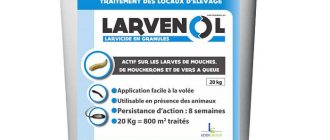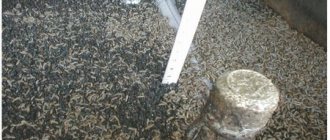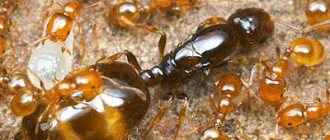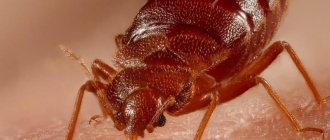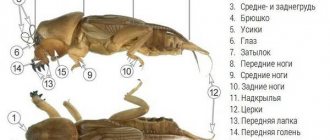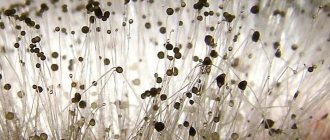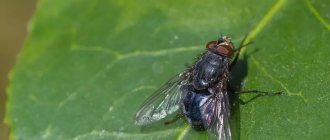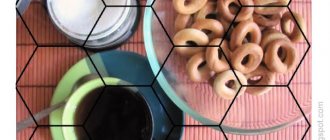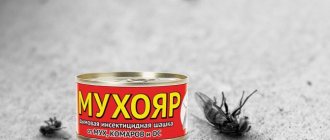Flying insects such as Drosophila flies are familiar to everyone, although not everyone knows what they are called. Throughout life, they occur quite often to any person.
Flies often swarm over warehouses with vegetables and fruits in market places, and the most unpleasant thing is that they annoyingly circle in whole flocks over a table with fruit or a left-over piece of sweet pie.
Despite the fact that these winged birds are completely safe for humans, they do not bite and do not carry dangerous bacteria, but with their intrusive presence they quite seriously irritate the psyche.
In nature , they can be found in the vegetable garden, in the garden near fruit-bearing trees and overripe berries. With the onset of cold weather, fruit flies usually move into houses, finding warmth and a favorite treat on the owners’ table.
Who are fruit flies?
If you accidentally leave any fruit in a container in an open space, after a while the process of rotting begins, and small midges will certainly begin to circle over this place. This swarm is sometimes quite difficult to get rid of.
Despite the fact that their life cycle is very short and they are completely harmless, they can seriously disrupt the process of preparing for the winter. Feeding on the nectar of fruits and berries, they fall into the container, die, and are difficult to catch from the total mass of jam.
The Drosophila fly has a second name - fruit fly. These insects have been living near humans for a long time.
This is a necessary measure for their survival, since waste in the form of leftover food in the trash can, on the kitchen table, or floor allows winged insects to reproduce.
They feel quite comfortable next to a person, which cannot be said about the person himself, who is constantly irritated by the annoying behavior of flies.
The fly is small in size, its body length ranges from 1.5 to 3 mm. In comparison to its small body structure, the fly has wings on its back that are significantly larger than its size.
Under a microscope, you can see that the eye color of Drosophila is red. It is impossible to see with the naked eye.
The insect's body is yellow-brown in color. Moreover, there is a striking difference between males and females: the body length of a female individual can reach 2.5 mm, in males it is much shorter, with a noticeable dark end of the body.
The abdomen of the female is characterized by a rounded shape, while in the male it is pointed, has a cylindrical shape with a blunt end, and small bristles are located at the base.
In females, the dorsal sclerotized part of the segmental ring has 8 developed segments. The male has 6 – 8 (and the 8th part contains the reproductive system). In addition, the female individual has a large number of chitinous plates on her abdomen.
A distinctive feature of these flies is that they always swarm in a flock. It is almost impossible to find a lone flying individual. They can often be seen above the soil of a potted plant. If one fly is found, a whole swarm can soon be expected.
Video
Drosophila
Harm from fruit flies
Drosophila, feeding on plant-based agricultural products, spoil vegetables, fruits and berries. On their paws they carry particles of rot from already spoiled foods that they love so much, so the process of spoilage of fresh foods accelerates. In addition, on their bodies, fruit flies can carry various microorganisms, which, when entering the human body, cause unpleasant painful sensations in the abdominal area. The same sensations can be caused by the waste products of these flies. Therefore, wash fruits and vegetables before eating so that no infection enters your body.
When you wash vegetables and fruits, you clean them of flies and their eggs.
In addition to excrement and foreign microorganisms, Drosophila eggs can enter the human body along with fruits and vegetables. A few hours after eating, the following sensations may occur:
- headache;
- nausea;
- diarrhea;
- bloating;
- flatulence;
- vomit.
People often think that the reason for this is “I ate something wrong,” but in reality it’s much worse. If the next day you feel well, then your body has coped with the Drosophila larvae, but if you feel sick or your stomach continues to hurt, go to the doctor.
Species of Drosophila fly
Today, there are 1,590 species of fruit flies.
The most common of them were the following:
- Drosophila black. Often found in gardens, orchards, strawberry beds, and other berries that are beginning to overripe. The individual has been studied better than other species. It is characterized by a yellow or light brown color with bright red visual organs. The size of the body varies from 2 to 3 mm;
- fruit fly. Preference in food is given to the juice of rotting fruits. The chest is 2.5 - 3.5 mm, the wingspan is up to 6 mm. The back is yellowish-brown, the yellow belly has brown spots, the chest is brown or yellow, and the visual organs are bright red. Males have a small black spot under their wings. Until full maturity, an individual develops from 9 to 27 days; 13 generations can change during the season. Females are larger in size compared to males;
- flightless drosophila. The insect has poorly developed wings, therefore it is not capable of flight; it moves by crawling or jumping. This species was obtained by crossing two different natural species of fruit flies. The size of a non-flying fly reaches 3 mm. Rotting fruits and vegetables became the main priority in food. The life cycle is 1 month;
- Drosophila is large. Often found in vegetable stores, especially if there are a lot of rotting vegetables and fruits. The size of the insect can reach 4 mm. The color of the head is yellow-brown, the body is light or dark brown. The lifespan is just over a month. Over the entire life cycle, females lay from 100 to 150 eggs.
Since Drosophila feeds mainly on fermentation products, it is attracted by the smells of rotting vegetables and fruits; it can often be found in storage facilities for vegetables, fruits, and other places abounding in fruit fermentation.
Origin of the species and description
Photo: Drosophila fly
The Drosophila fly can appear in any home, and in vegetable or fruit warehouses and stores it is a permanent resident. This animal is familiar to any gardener and gardener. This fly is quite annoying and extremely difficult to get rid of. Despite this, fruit flies are highly valued by scientists. They are unique scientific material. Today various experiments and scientific experiments are carried out on this animal.
Video: Drosophila fly
The Drosophila fly is called differently: Drosophila minor, fruit fly, fruit midge, Drosophila vulgaris. In Latin the name sounds like Drosophila melanogaster. This is an insect with two wings, a type of midge belonging to the genus Drosophila. Drosophila belongs to a large family of fruit flies.
Interesting fact: Drosophila has many different names and nicknames. People call these insects wine or vinegar flies. This is due to the fact that they very quickly detect the source of the sour fruity smell. Therefore, there are many such animals in various factories and plants for the production of juices and wine.
Today there are quite a few varieties of fruit flies. Scientists count more than a thousand species. Most species live in subtropical and tropical climates. In particular, more than three hundred species of such insects live on the Hawaiian Islands alone. On the territory of the Russian Federation, the most common type of fly is the flightless Drosophila.
The Drosophila fly is characterized by the following features:
- a diet consisting of fermented products;
- high sensitivity to sour aromas;
- fertility - one female is capable of laying several hundred eggs throughout her life;
- the presence of obvious visual differences between females and males.
How long do they live?
To understand how long fruit flies live, it is necessary to study their life cycle. The adult often lays eggs in rotting fruit.
At an average ambient temperature of +25 degrees, within 10 days the eggs reach the adult stage. At temperatures below +18 degrees, the development of the larvae slows down by 2 times.
The average life cycle of Drosophila is 1 – 2 months. Life expectancy depends on external factors (environmental conditions). At high temperatures, the lifespan of a fly can be less than 1 month.
During their existence, females produce an average of 400 clutches of eggs measuring 0.5 mm. Under unfavorable environmental conditions, the number of eggs is significantly less. However, the shorter the life cycle of flies, the more offspring they try to produce.
Features of character and lifestyle
Photo: Drosophila fly in nature
Fruit flies are annoying, fussy insects. Their life expectancy is short, so these midges are in a hurry to leave behind offspring as soon as possible. Wine midges live wherever there are fruits, vegetables, their remains, wine, jam and other food products. The entire life of these animals takes place in apartments, private houses, wine storages, various warehouses and shops.
The Drosophila fly is highly sensitive to fermented foods. If these appear somewhere, then in the very near future we can expect the formation of a whole swarm of annoying midges. At the same time, flies live and reproduce regardless of the time of year. In addition to vinegar, fruit acids, and rotting products, these insects are attracted to high humidity. They often live in flower pots, outdoor flowers and some ornamental crops. The cause of midges is excessive watering of plants.
Interesting fact: Drosophila bring not only harm, but also great benefit to people. They are often used in various studies. For example, they are used to model some human diseases. During such studies, about 61% of matches were found between diseases and the genetic code of the insect.
The rhythm of activity of Drosophila flies in natural conditions is with a period of about twenty-four hours. However, scientists found midges with an arbitrary rhythm of life - they moved, ate and rested at completely different intervals. Midges do not live very long - no more than twenty days. Their lifespan depends on many factors: ambient temperature, nutrition, type of insect, humidity level.
Drosophila reproduction
Reproduction of Drosophila, like many winged insects, occurs in several stages.
The main stages of this process are as follows:
- the female lays eggs;
- after the larvae mature in the eggs, they are born;
- the larva reaches the required size, turning into an adult.
Since the fly's body has 8 chromosomes, its offspring develop well in rotting fruits, characterized by a semi-liquid consistency.
The body of the larvae is equipped with specific float chambers, thanks to which they are able to stay afloat.
Social structure and reproduction
Photo: Insect Drosophila fly
The Drosophila fly is an insect with a short lifespan. At sixteen degrees above zero, such animals live only ten days. For this reason, their body develops very rapidly; female fruit flies are able to lay eggs literally immediately after birth - on the second or third day. Female midges are very fertile. They retain their ability to reproduce throughout their lives.
The female lays eggs directly on fruits, vegetables, and their remains. The eggs are very small. Their length is no more than 0.5 millimeters. They have an elongated shape. At one time, a female Drosophila can lay up to eighty eggs. And over the course of a lifetime, the number of eggs laid by one individual can reach several hundred.
Interesting fact: A female fruit fly only needs one mating with a male to lay eggs several times. The fact is that this insect knows how to preserve seminal fluid for later use.
The development process and growth rate of larvae depends on their diet. After birth, the larvae live on the surface of the fruit. They can live in a semi-liquid environment without drowning thanks to special float chambers. The length of one larva is usually three and a half millimeters. Their body color is white. Some time after birth, the larva pupates, and after four days an adult emerges from the pupa.
Larvae
The average size of a Drosophila fly egg is 0.5 mm; when the time comes for the larva to be born, its size increases significantly.
Under normal weather conditions, in a favorable environment rich in organic matter, Drosophila eggs mature faster, the larvae emerge a day after laying, and are 3.5 cm in length.
Within 5 days, intensive growth occurs, accompanied by molting, which occurs 2 times (one day after hatching, then 2 days later).
The larvae are characterized by high adaptability to the environment, since fruit midges lay eggs in the pulp of rotting fruits, which is favorable for offspring.
The first days after being released from the egg, Drosophila larvae balance on the surface of the fruit juice, then delve into the pulp, which for a while becomes both home and food for them. After 5 days, the larva pupates and maintains this state for the next 5 days.
A young female exhibits the ability to mate within the first 12 hours after birth. The male's sperm obtained after mating is retained by the female for further reproduction of offspring.
Appearance and features
Photo: What a Drosophila fly looks like
The Drosophila fly is called a fruit fly because of its special relationship with vegetable and fruit waste. It is quite easy to recognize this insect.
It has certain characteristic external features:
- small sizes. This is a tiny midge. The average length of an insect is about two millimeters. In this case, the wings are always longer than the body. Female representatives are slightly larger. Their average length is two and a half millimeters;
- bright and prominent eyes. Drosophila has bulging, red eyes. They consist of a large number of segments. Of course, it is problematic for a person to see them with the naked eye. This feature of this tiny insect can only be seen if it is greatly enlarged;
- brown-yellow body color. The color of different species may vary slightly - be lighter or darker;
- bristles with pointed ends. This feature is characteristic of male flies;
- round or cylindrical abdomen. A cylindrical abdomen is characteristic of males, and a more rounded abdomen is characteristic of females;
- eight well-developed tergites in females. Males have only six of them, because two tergites are fused together;
- the presence of durable chitinous plates. Despite their small size, these insects have a durable chitinous coating in the form of plates. Females have a larger number of such plates, while in male Drosophila the four platinas are not developed.
The appearance of fruit flies depends not only on nature. It may vary depending on the climate, environmental characteristics and nutrition of the animal. It is also worth remembering that these insects are great travelers. They very often travel from one country to another on fruits and vegetables. In this case, the midges may slightly change their color and habits.
Where do fruit flies come from?
Usually these dipterous insects can be found in the summer, when it is warm enough outside. This state of climate is the most favorable for them, therefore, with enough food, they can seriously irritate the psyche.
Rummaging over potted flowers, fruits and vegetables that were accidentally left on the table, they are seriously annoying with their intrusiveness.
Therefore, despite the fact that they do not pose any danger or threat to health, many people try to get rid of them.
From fruits and vegetables
If an apple or other fruit lies on the kitchen table or in the room for a long time, a natural process of rotting occurs. Fruit aromas are the most attractive to these winged insects.
Therefore, the fruit fly, together with its relatives, is often found in these places. You can often see insects swarming over bowls of berries intended for making jam or over rotten vegetables that were not removed from the beds in time.
From the ground
If the soil is rich in organic fertilizers, fruit flies try to lay eggs in these places so that after the larvae appear, they have the opportunity to feed normally.
At normal temperatures, the larvae feel great, develop quickly, and grow stronger.
The faster and better the maturation process, the more likely it is to get large offspring in the future.
Through ventilation
Often in the summer, Drosophila flies, attracted by the sweet smell of fruits or some baked sweets, enter the apartment in all available ways.
Since their size is very small, they can fly into the house through the smallest openings. Ventilation works on the principle that all odors in the kitchen go outside through the hood.
Smelling a sweet aroma, the flies rush towards it, bypassing all obstacles. Therefore, they can enter the apartment through the ventilation.
From indoor plants
Many adults lay eggs in flower pots. Housewives often use organic fertilizers for growth, which also has a beneficial effect on the development of Drosophila larvae.
The substances contained in fertilizers for flowers not only promote the growth of plants, but also feed parasites, whose eggs are pre-laid in fertile soil.
From leftover food
Quite often, the reason for the appearance of Drosophila flies in an apartment is leftover food that is not removed from the kitchen table in time or thrown out of the trash can.
The smell of rot may attract a swarm of winged insects , which will intrusively circle in one place in search of a tasty morsel.
Even if you throw out the contents of the trash can, the winged insects will remain in the same place for some time, waiting for a new portion of food.
How to get rid of fruit flies in the kitchen
There are ready-made products and traps for fruit flies on sale. They are very effective, especially in the kitchen.
Remedy for Drosophila glue trap “Raptor”
The principle of operation of the trap is simple: insects flock to the smell and stick to the inside of the trap, unable to get out of it. At the same time, the trap will remain clean and attractive, so nothing will interfere with the feeling of cleanliness and comfort in the kitchen. The consumption rate of this trap is on average 10-12 m2.
Step-by-step instructions for using the Raptor trap
- Open the box.
- Take out a can of liquid.
- Unscrew the cap of the can.
- Take out the cardboard tape with the sticky layer.
- Remove the protective paper with a sharp movement
- Fold the trap into a “house” - the sticky side with the pattern should be on the inside.
- Connect the lock labeled “Insert into slots” in the direction of the arrows.
- Place the trap on the neck of the can.
- Place the trap in insect habitats. These can be pantries, food storage cabinets.
Important! Do not place the trap in drafts, as the trap should retain its properties for up to 30 days. . Remedy for fruit flies - Aeroxon trap
Remedy for fruit flies - Aeroxon trap
This trap is designed to get rid of fruit flies. It is designed in the same way as the Raptor. There are only 2 pieces in a package. This trap will destroy tiny flies flying over rotting fruit 2 times faster.
Preventing the appearance of fruit flies in the kitchen
The best way to combat flies is to prevent their occurrence. The first thing you need to do is remove everything that this thin-winged army flocks to:
- Wash the trash can.
- Remove any leftover food.
- Clean your pets' bowls regularly if you have them.
- Check packages of fruits and vegetables regularly, and be sure to throw away any that are rotten.
- Check under the sink for food debris.
- Throw away used coffee or tea infusers.
- Check the storage of potatoes, onions, and pumpkins more often to ensure that there is no breeding ground for midges.
- Do a thorough cleaning of the kitchen.

